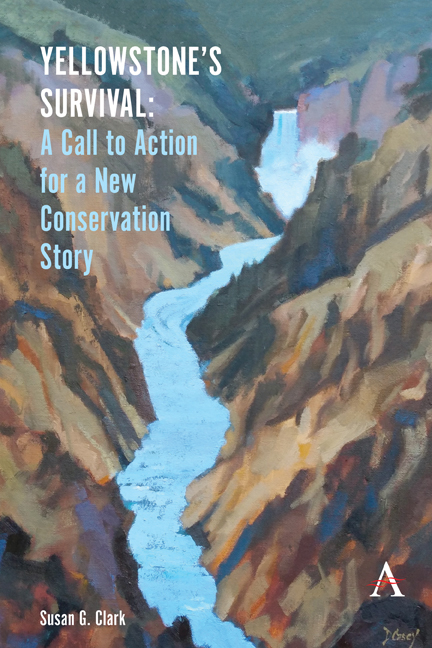 Yellowstone's Survival - A Call to Action for a New Conservation Story
Yellowstone's Survival - A Call to Action for a New Conservation Story Summary
The Greater Yellowstone Ecosystem (GYE) is one of the finest examples of natural resources our nation has to choose to protect. It is home to millions of acres of preeminent public lands including Yellowstone and Grand Teton National Parks, National Wildlife Refuges, National Forest, and Bureau of Land Management lands. The GYE encompasses places whose names resonate as unique, beautiful, wild, remote, exciting and protected, while being accessible for a wide array of recreational and, yes, development opportunities. Fortunately, the GYE is an ecosystem that has the amenities and diversity to support a wide range of lifestyles for residents and visitors alike.
The GYE is currently experiencing increased development to accommodate the migration of people wanting to live in the area and is experiencing an equally dramatic increase in visitation from around the world. More people means more pressure on the ecosystem, which then calls for new, innovative, and coordinated approaches to managing these resources.
At over 20 million acres, the GYE is the largest nearly intact ecosystem in the continental United States. Fifteen million of these acres are public lands managed by four federal agencies. The remainder are managed by three state governments, numerous county and local governments, and private landowners. While these entities have organizations in place to accomplish some mutual goals, they are often not ecosystem goals. The rapid social and environmental changes are causing unintended harmful impacts and to truly solve these issues, they must be considered on an ecosystem basis. The conflicting missions of preservation and use and the differing priorities of the entities often put the long-term preservation of our ecosystems and the opportunities they provide at risk.
In this book, Dr. Susan Clark lays out a road map of productive ways to discuss, learn about, and act upon these challenges. Her approach to seeking solutions is unique in that she reaches far beyond the traditional boundaries of her field of ecology to integrate common sense, geography, psychology, sociology, anthropology, philosophy, policy sciences, and hope. She lays out our need for a rapid, new, colearning network to move us forward quickly in a responsible way to conserve greater Yellowstone.
- Type
- Chapter
- Information
- Yellowstone's Survival - A Call to Action for a New Conservation StoryA Call to Action for a New Conservation Story, pp. xvii - xviiiPublisher: Anthem PressPrint publication year: 2021


